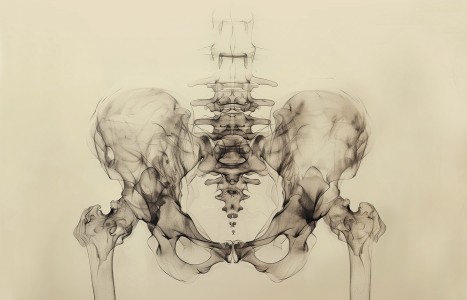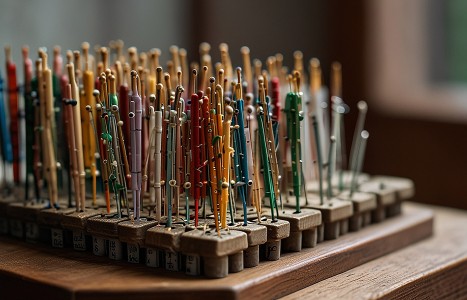People today want convenience, whether it be from their bank, credit card, favorite retail store, or restaurant. They demand it from the companies who hold their loyalty, including their health care providers (you). They don’t want to call and possibly be put on hold, and they want to use an app or schedule an appointment on your website. Here are three reasons your practice can gain by switching to online appointment scheduling.
The Acupuncturist and the Opioid Crisis: Conquering Pain & Addiction in the U.S.
The current opioid epidemic dominates the discussion among national health leaders, recovery advocates and families nationwide. Opioids include heroin as well as prescription pain relievers such as oxycodone, hydrocodone, codeine, morphine, fentanyl, and others. Opioids interact with opioid receptors on nerve cells in the body and brain. While generally safe when taken for a short time and as prescribed by a doctor, opioids can produce euphoria in addition to pain relief. Misuse is a serious problem, which can be taking an opioid without a prescription, or in more significant quantities than are safe. Dependence, addiction, overdose (leading to death) are genuine concerns with regular opioid use.1
Defining Addiction
Addiction is defined as chronic and relapsing brain disease characterized by an individual who is pathologically pursuing reward and relief by substance use and other behaviors.2 Of the 20.5 million Americans 12 or older who had a substance use disorder in 2015, two million involved prescription pain relievers and 591,000 involved heroin.3 The statistics from 2015 are catastrophic: 52,404 lethal drug overdoses; 20,101 overdose deaths related to prescription pain relievers; and 12,990 heroin overdose deaths.4
In 2014, a total of 10.3 million people reported using prescription opioids without a prescription. Emergency room visits involving the misuse or abuse of prescription opioids increased 153 percent between 2004 and 2011. Admissions to substance-abuse treatment programs linked to prescription opioids more than quadrupled between 2002 and 2012. Between 2000 and 2014, the rates of death from prescription-opioid overdose nearly quadrupled (from 1.5 to 5.9 deaths per 100,000 persons).

Startlingly, 259 million prescriptions were written in 2012 for opioids.5 Four in five new heroin users started out misusing prescription painkillers and ninety-four percent of respondents in a 2014 survey of people in treatment for opioid addiction said they chose to use heroin because of the high cost and difficulty accessing prescription opioids.6-7
Using national-level data, it was found that heroin users were 3.9 times as likely to report nonmedical use of opioids in the previous year, and 2.9 times as likely to meet the criteria for abuse or dependence on opioids, as persons who did not use heroin.8 It was also found that nonmedical use of multiple opioids was associated with transitioning to heroin.9 Heroin is pharmacologically similar to prescription opioids. All these drugs produce their action through endogenous opioid systems that regulate a wide range of functions through three major types of G-protein-coupled receptors: mu, delta, and kappa.10-11
The Role of Pain in the Opioid Crisis and What TCM Has to Offer
Millions of Americans have persistent or recurring pain that may become chronic and debilitating. A recent national estimate suggests that 126 million adults experience some pain in a given year, with about one-third (40 million adults) having severe pain. Interestingly, women are more likely to have chronic pain, be prescribed prescription pain relievers with higher doses, and engage in prolonged usage.12 Women may also become dependent on prescription pain relievers more quickly than men. Between 1999 and 2010, the death rate for women of prescription pain-reliever overdoses was at estimated forty-eight thousand.13
Among the many alternative pain-managing therapies that exist is acupuncture (the stimulation of specific points on the skin, usually by the insertion of the sterile metallic needles). Acupuncture has many benefits, including stress reduction and pain relief; however, psychologically, acupuncture has also been reported to increase the levels of various chemicals in the central nervous system—enkephalin, epinephrine, endorphin, serotonin, norepinephrine and dopamine.14 Many believe that acupuncture could be a promising conduit to both preventative and treatment mechanisms concerning opioid use and abuse.
Over the years, numerous scientific studies attempted to assess the ability of acupuncture to control pain. The benefits of acupuncture in evoking pain relief have been widely accepted, and are in use in pain control clinics worldwide.15 In fact, the Mayo Clinic also advocates the use of acupuncture for pain relief.16-17
Multiple theories exist for acupuncture mechanisms, including: the Neurotransmitter Theory (acupuncture affects higher brain areas and stimulates the release of neurotransmitters that influences the immune system and the antinociceptive system); the Autonomic Nervous System Theory (acupuncture stimulates the release of norepinephrine, acetylcholine, and several types of opioids, which reduce pain); the Vascular-Interstitial Theory (acupuncture affects the electrical system of the body, facilitating the transfer of material and electrical energy between normal and injured tissues); the Blood Chemistry Theory (acupuncture affects the blood concentrations of triglycerides, cholesterol, and phospholipids); and the Gate Control Theory (acupuncture activates non-nociceptive signals in the dorsal horn, "gating out" painful stimuli).18-21
TCM believes that it is more effective to prevent pain than to treat it after it begins, and that acute pain can be treated and eliminated much more quickly than chronic pain. For these reasons, practitioners suggest that it is important to seek treatment before the pain becomes severe.
The Role of TCM in Treating Addiction
TCM therapies may represent potential ways for drug addicts to detoxify. Acupuncture therapy, including body acupuncture and ear acupuncture, is an effective, safe, handy, and economical way to handle clinical treatment. Clinical trials suggested a capacity for acupuncture to treat heroin dependence, and experimental studies proposed that acupuncture could improve biosynthesis, as well as expression and release of endogenous opiate peptides in the body, which may be a primary mechanism for acupuncture to treat the opioid withdrawal syndrome.22
The National Acupuncture Detoxification Association (NADA) has created protocols that are practiced in over 250 hospitals and treatment centers in the U.S. and U.K. In 1996, the World Health Organization (WHO) accepted acupuncture as a therapy for drug treatment, followed by acceptance from the National Institutes of Health in 1997. Today, it's estimated that over 700 addiction treatment centers use acupuncture as an alternative and adjunctive therapy.22
A January 2016 letter from the Joint Acupuncture Opioid Task Force, Acupuncture Now Foundation, and the American Society of Acupuncturists outlined several benefits of acupuncture in the midst of the opioid crisis, stating that acupuncture has the potential to reduce or even, in some cases, eliminate the need for opioids and non-opioid drugs, while also helping with opioid addiction treatment. The letter indicated that acupuncture showed promise as an alternative therapy for pain management and other conditions, thereby helping to stop opioid addiction, as opposed to the continued use of strong and harmful opioids that perpetuate the epidemic. As such, acupuncture may be useful in reducing the number of opioids that are prescribed, thus reducing the likelihood of becoming addicted.23
TCM and Herbal Medicine
Chinese medicine consists of natural products like plants, animals, and minerals. For the last 200 years, TCM has been used in the treatment of drug addiction, which included traditional Chinese herbology. Ten Chinese medicines for the treatment of opiate addiction have been approved by the Chinese State Food and Drug Administration (SFDA).24
Tonifying herbs such as Radix Glycyrrhizae (Gancao), Radix Angelicae Sinensis (Danggui), Radix Ginseng (Renshen), Radix Astragali (Huangqi), and Rhizoma Atractylodis Macrocephalae (Baizhu) are often used in the treatment of addiction. Contemporary pharmacological research has provided some evidence that many tonifying herbs exert significant regulatory effects on the neuroendocrine system and immune system; as such, this can be a pharmacological foundation for exploring the efficacy of herbal treatments for drug addiction. An analysis of herbal safety in the treatment of drug addiction indicated that over half of the herbal formulae reported in original research papers contained toxic herbs.23-24 These toxic herbs may have therapeutic effects for drug addiction, but must be applied with caution.
Acupuncture as a means of opiate detoxification has less harmful side effects, higher safety, and ideal effects in regards to the inhibition of withdrawal symptoms and relapse. Co-administration of TCM with modern medicine shows some synergistic effects in detoxification.25 TCM might prove to be the brightest hope yet for overcoming the opioid crisis.
References
- National Institute of Drug Abuse. Opioids. NIH, 2015.
- Chase C. Public Policy Statement: Definition of Addiction. American Society of Addiction Medicine, 15 August 2011.
- Bose J, Hedden S, et al. Key substance use and mental health indicators in the United States: Results from the 2015 National Survey on Drug Use and Health. Substance Abuse and Mental Health Services Administration, 2016.
- Rudd RA, Seth P, et al. Increases in Drug and Opioid-Involved Overdose Deaths—United States 2010-2015. CDC: Morbidity and Mortality Weekly Report, 14 Aug 2017.
- National Center for Injury Prevention and Control. Opioid Painkiller Prescribing. CDC: Vital Signs, 1 July 2014.
- Jones CM. Heroin use and heroin use risk behaviors among nonmedical users of prescription opioid pain relievers - United States, 2002-2004 and 2008-2010. Drug Alcohol Depend, 1 Sept 2013;1;132(1-2):95-100.
- Cicero TJ, et al. Changing Face of Heroin Use in the United States. JAMA Psychiatry, 1 July 2014.
- Becker WC, Sullivan LE, et al. Non-medical use, abuse and dependence on prescription opioids among U.S. adults: Psychiatric, medical and substance use correlates. Drug Alcohol Depend, 1 Apr 2008.
- Grau LE, Dasgupta N, et al. Illicit use of opioids: Is OxyContin a “gateway drug”? Am J Addict, May-Jun 2007;16(3):166-73.
- Maher CE, Martin TJ, et al. Mechanisms of mu opioid receptor/G-protein desensitization in brain by chronic heroin administration. Life Sci, 22 Jul 2005.
- Kreek MJ, Levran O, et al. Opiate addiction and cocaine addiction: underlying molecular neurobiologyand genetics. J Clin Invest, 1 Oct 2012.
- Nahin RL. Estimates of pain prevalence and severity in adults: United States, 2012. J Pain, Aug 2015;16(8):769-80.
- Center for Disease Control and Prevention. Prescription Painkiller Overdoses: A Growing Epidemic, Especially Among Women. CDC, 2013.
- Lin JG, Chen WL. Acupuncture analgesia: A review of its mechanisms of actions. Am J Chin Med, 2008;36(4):635-45.
- Andersson S, Lundeberg T. Acupuncture- from Empiricism to Science: Functional Background to Acupuncture Effects in Pain and Disease. Medical Hypotheses, 1995;45:271-81.
- Patient Care & Health Information. Acupuncture. Mayo Clinic, 14 Feb 2018.
- Nahin RL, Boineau R, et al. Evidence-Based Evaluation of Complementary Health Approaches for Pain Management in the United States. Mayo Clin Proc, Sept 2016;91(9):1292-306.
- Cho ZH, Wong EK, et al. Neuro-Acupuncture. Los Angeles: Q-Puncture, 2001.
- White A, Ernst E. Acupuncture: A scientific appraisal. Oxford: Butterworth-Heinemann, 1999.
- Wong JY. A manual of neuro-anatomical acupuncture. Toronto: JY Wong, 1999.
- Helms JM. Acupuncture energetics: A clinical approach for physicians. Berkeley: Medical Acupuncture Publishers, 1997.
- Stuyt EB, Voyles CA. (2016). The National Acupuncture Detoxification Association protocol, auricular acupuncture to support patients with substance abuse and behavioral health disorders: Current perspectives. Subst Abuse Rehabil, 2016;7:169-80.
- Centers for Disease Control and Prevention. 2016 Guideline for Prescribing Opioids for Chronic Pain. Federal Register, 23 Mar 2016.
- Min X, Lee DT, et al. A Database on Traditional Chinese Medicine Treatment for Drug Addiction. Guangzhou, China: Guangzhou University of Chinese Medicine, 386-394.
- Shi J, Liu Y, et al. Traditional Chinese medicine in treatment of opiate addiction. Acta Pharmacol Sin, Oct 2006; 27(10):1303-8.



